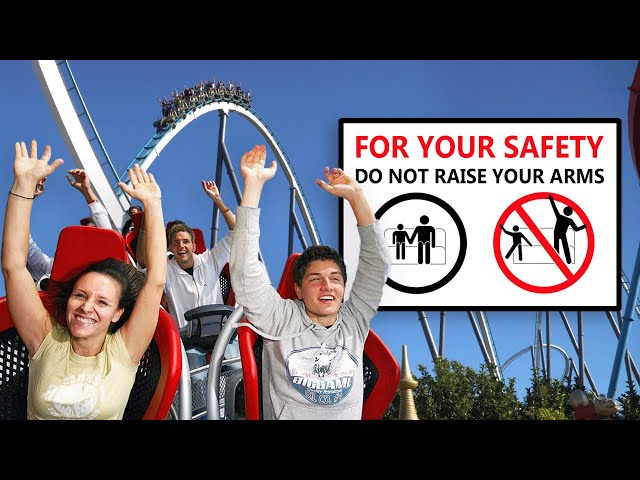
Have you ever been on a roller coaster and felt the urge to throw your hands up in the air? It’s a common reaction, almost instinctive. This seemingly simple gesture actually serves several purposes beyond just expressing excitement. From enhancing the feeling of freedom to providing visual cues for others, raising your hands on a roller coaster is more than just a fun pose.
This article will delve into the various reasons why riders instinctively raise their hands during these thrilling rides. We’ll explore how this action contributes to the overall experience, from the physiological effects to the social dynamics at play. Get ready to uncover the science and psychology behind this iconic roller coaster behavior.
Why Riders Raise Hands on Roller Coasters
The act of raising your hands on a roller coaster is deeply intertwined with the physical and psychological sensations experienced during the ride. It’s a combination of instinct, physiological response, and social influence that creates this widespread phenomenon.
Physical Sensations
As the roller coaster accelerates, climbs hills, and plunges down drops, riders experience a range of forces acting upon their bodies. These forces, known as G-forces, can create a feeling of being pressed down or even lifted out of your seat. Raising your hands can help counteract this sensation by creating a sense of openness and allowing for better air circulation.
Psychological Response
The thrill of a roller coaster ride often triggers a surge of adrenaline and endorphins, leading to feelings of excitement, exhilaration, and even euphoria. Raising your hands amplifies these sensations by allowing riders to fully embrace the experience. It’s a way of expressing joy, freedom, and a sense of being alive in the moment.
Roller Coaster Exhilaration
The feeling of exhilaration on a roller coaster is unlike anything else. The combination of speed, height, and unexpected twists and turns creates a unique sensory overload that triggers a cascade of physiological responses. Raising your hands allows riders to fully immerse themselves in this exhilarating experience.
Wind in Your Hair
As the roller coaster speeds through curves and dips, the wind rushing through your hair adds another layer of excitement. This physical sensation further enhances the feeling of freedom and exhilaration, making the ride even more memorable.
Heightened Senses
The intense sensory input from a roller coaster ride – the speed, the G-forces, the sounds, and the visuals – can heighten our awareness and make us feel more alive. Raising your hands allows riders to fully engage with these heightened senses, creating a more immersive and unforgettable experience.
G-Force Counteraction
G-forces are a significant factor in the roller coaster experience. These forces, which act on the body due to acceleration and deceleration, can create a feeling of being pressed down or even lifted out of your seat. Raising your hands can help counteract this sensation by creating a sense of openness and allowing for better air circulation.
Reducing Pressure
When you raise your hands, it creates more space around your chest and torso, reducing the feeling of pressure from G-forces. This can make the ride more comfortable and enjoyable, especially during intense drops or turns.
Maintaining Balance
G-forces can also affect our balance, making us feel unsteady or disoriented. Raising your hands can help improve stability by providing a wider base of support and allowing for better weight distribution.
Visual Cues and Signaling
Raising your hands on a roller coaster is not just about personal experience; it’s also a form of communication with other riders and park staff.
Expressing Enjoyment
A raised hand is a clear signal that the rider is having fun and enjoying the ride. This visual cue can be contagious, spreading excitement and enthusiasm among fellow passengers.
Safety Indication
In some cases, raising your hands can also serve as a safety indication. For example, if a rider feels unwell or needs assistance, they may raise their hand to signal for help from park staff.
Rider Engagement
The act of raising your hands on a roller coaster is a form of active participation in the ride experience. It’s a way for riders to fully engage with the thrills and sensations, creating a more memorable and enjoyable journey.
Shared Experience
Raising your hands together with other riders creates a sense of unity and shared excitement. It fosters a feeling of camaraderie and strengthens the bond between passengers.
Conclusion
The next time you find yourself on a roller coaster, don’t hesitate to throw your hands up in the air! This seemingly simple gesture is more than just a fun pose; it’s a complex interplay of physical sensations, psychological responses, and social cues that contribute to the overall thrill and enjoyment of the ride. From counteracting G-forces to expressing excitement and signaling engagement, raising your hands on a roller coaster enhances the experience for both the individual rider and those around them.
